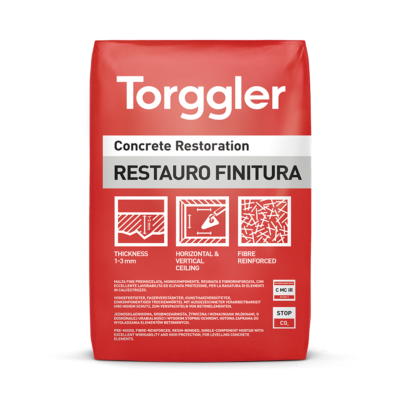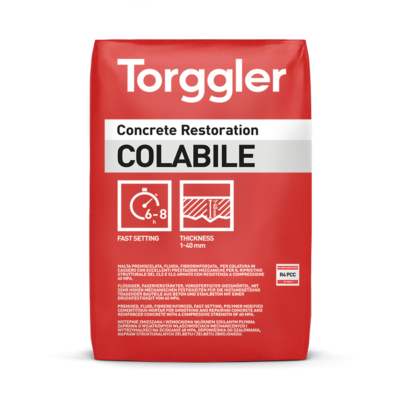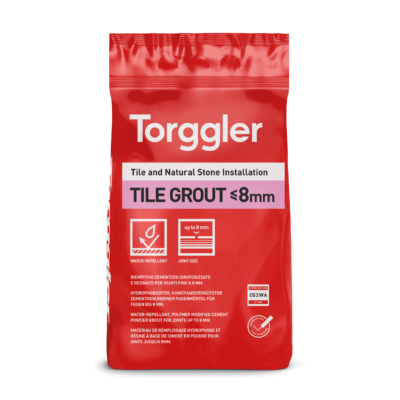Neoplast Latex
Adhesive and plasticising additive for the construction of renders and bridges.
Discover more



Neoplast Latex is a modifier for cement and hydraulic lime based on specially formulated, recently synthesised resins that are highly resistant to saponification and the action of water, highly adhesive, and reduce the water/cement factor while giving the mix excellent thixotropy.
For each type of use, Neoplast Latex is first diluted with water in the volumetric ratios required for the different applications. Only with this solution will the dry mixtures of cement and aggregates, prepared separately, then be mixed and adjusted in consistency to the individual application requirements.
Neoplast Latex must be stirred until completely homogenous before use. Mortars modified with Neoplast Latex must not be applied below +5 °C. Plasters, renovations, coatings, etc. must be kept moist for a few days. In all applications with Neoplast Latex, careful attention must be paid to the preparation of the substrate. The substrate must be clean, sound, free of all traces of oil, grease, residues of release agents, anti-evaporating agents or paints, and suitably brightened. Loose particles and patinas of cement must be carefully removed. The substrate must also first be wetted until completely saturated. In all applications described below, the general rules of proper composition and application of mortars and concretes must be scrupulously observed:
In plastering (rendering):
For repairs, carryovers and re-casting:
Equal volumes of cement and live sand are mixed.
Dilute 1 part by volume of Neoplast Latex with 1 part by volume of water.
The cement-sand mixture is mixed with diluted Neoplast Latex until a very fluid mortar (grout) is obtained. This grout is spread on the suitably prepared substrate (as already described) by brushing vigorously with a stiff broom or spreading with a brush for limited repair work.
Repair mortar or filler concrete is applied on this still fresh coat of anchor.
Consumption approx. 300 g/m².
For thin repairs and fillings, an addition of approx. 10% Neoplast Latex by weight of the mortar binder is recommended. This proportion is achieved by pre-diluting 1 part by volume of Neoplast Latex with 4 parts by volume of water and mixing mortar with the diluted Neoplast Latex.
In sealing mortars:
Since it is very important that the sealing mortar has as little shrinkage as possible, a homogenous but very stiff mortar must be prepared.
Mortar composition1 part by volume of cement:
3 parts by volume of sand (the grain size will depend on the size of the joint, crack, cavity, etc. to be sealed).
Mixing solution:
1 part by volume of Neoplast Latex
4 parts by volume of water
For bonding tiles:
Using Neoplast Latex in combination with a powder adhesive, a waterproof, strongly adhesive bed with good chemical resistance is obtained (for swimming pools, industrial floor and wall coverings, etc.).
Dilute 1 part by volume of Neoplast Latex with 1 part by volume of water.
The adhesive is mixed with 40 % Neoplast Latex diluted as above.
The instructions for using the adhesive are followed.
The application of the mix must be generous so as to create a continuous and therefore waterproof adhesive bed. In the case of particularly demanding applications such as swimming pools, drinking water tanks, etc. and tiles with very profiled soffits, it is essential to spread the adhesive also on the reverse side of the tile in order to avoid voids.
Neoplast Latex must be protected against frost. In unopened original packaging it will keep for at least 12 months.
| Code | Packaging | Packaging size | Pallet | Barcode |
|---|---|---|---|---|
| 6097 | bottle | 20x0,8kg |
24 cardboards
|
|
| 6098 | canister | 6kg |
128 canisters
|
|
| 6099 | canister | 10kg |
60 canisters
|
|
| 6100 | canister | 25kg |
28 canisters
|
Neoplast Latex is used
| Density mass (sec. UNI 9055) | 1.013 kg/l |
| Dry residue (sec. UNI 8490/1) | 35% |
| pH (sec. UNI 8490/4) | 6.6 |
| Viscosity | approx. 35 cP |
| Saponification number (sec. UNI 9530) | 4 |
| Chloride content (sec. UNI 7119) | absent |
| Residue on ply 0.040 mm (sec. UNI 9531) | no residue |
| Compressive strength at 28 days (sec. DIN 1164) | approx. 45.0 N/mm² |
| Flexural strength at 28 days (sec. DIN 1164) | 12 N/mm² |
| Tear resistance (sec. UNI 9532) | > 3 N/mm² (break in substrate) |
| Shrinkage (sec. DIN 52450) | approx. 0.1 mm/m |
| Water absorption (sec. DIN 4110) | approx. 2% |
| Abrasion resistance (sec. EBENER) | 90 g |
N.B.: The cement samples are based on normal mortar containing Neoplast Latex and were prepared using 230 g of a solution consisting of 1 part by volume Neoplast Latex and 3 parts by volume water, corresponding to a dosage of 12.8 % Neoplast Latex to weight of cement (425 ptl).
100 to 200 g of Neoplast Latex per kg of cement used.
Contact our team for personalized support and product guidance.